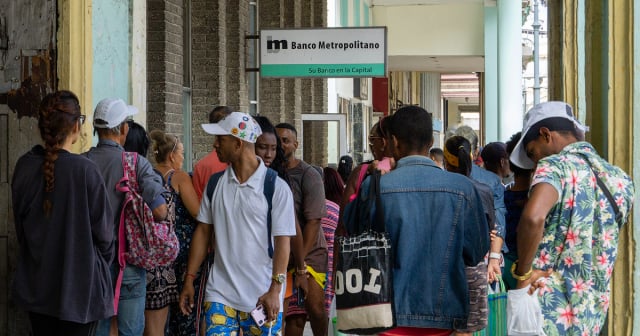The European and US currencies registered a new rise in the informal currency market in Cuba, whose behavior constitutes a clear indicator of the deterioration of the purchasing power of Cubans.
If the day before it was the freely convertible currency (MLC) that expressed a new increase, reaching the barrier of 300 Cuban pesos (CUP), this Sunday the exchange rate prepared by elTOQUE reflected a new rise in the reference currencies.
While the dollar climbed two points to place its informal price in the 387 CUP, the euro increased by one point and its purchase value was set at 391 CUP. Other alternative exchange rates detect an even greater demand for the European currency on social networks and place its price at 392 CUP.
With this Sunday's values, the minimum wage established with the failed "economic and monetary regulation", and still in force (2,100 CUP), converts to 5.4 dollars, or 5.3 euros.
The government of the “continuity” of Miguel Diaz-Canel It still fails to stop inflation and undertake the necessary reforms to correct economic imbalances and lift millions of Cubans out of the extreme poverty in which they live.
Exchange rate today 05/05/2024 - 6:42am in Cuba:
- Dollar exchange rate USD a CUP according to TOUCH: 387 CUP
- Euro exchange rate EUR a CUP according to TOUCH: 391 CUP
- Exchange rate of MLC and CUP according to TOUCH: 300 CUP
Alternative exchange rate from other platforms:
- Dollar (USD) exchange rate: Buy 385 CUP, Sell 387 CUP
- Euro (EUR) exchange rate: Buy 391 CUP, Sell 392 CUP
- MLC exchange rate: Buy 296 CUP, Sell 300 CUP
In this scenario, the Cuban regime seems to find itself in a dead end, unable to offer economic solutions to the problem and opting to blaming the devaluation of the CUP on the independent media, Specially to elTOQUE.
At the end of January, Díaz-Canel, through his then Minister of Economy and Planning, the defenestrated Alejandro Gil Fernandez, announced that he was prepared to the intervention of the informal foreign exchange market in February.
Although no details of the interventionist plan were offered, the Presidency of Cuba indicated that the government would advance “in the presentation of proposals to resize the exchange market, the intervention of the informal sector and the control of the exchange rate in the country.”
In this sense, they indicated that the actions to be developed included “the determination of the exchange rate and the formation of prices.” However, after the dismissal of Gil Fernández, the issue of intervention in the informal currency market has ghostly appearances in official rhetoric, without taking shape in reality.
What do you think?
COMMENTFiled in:
